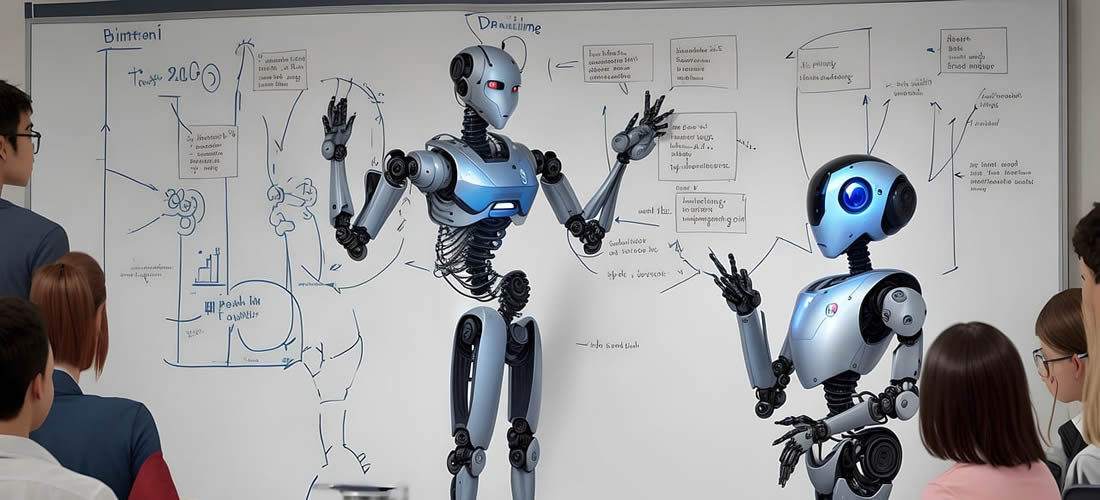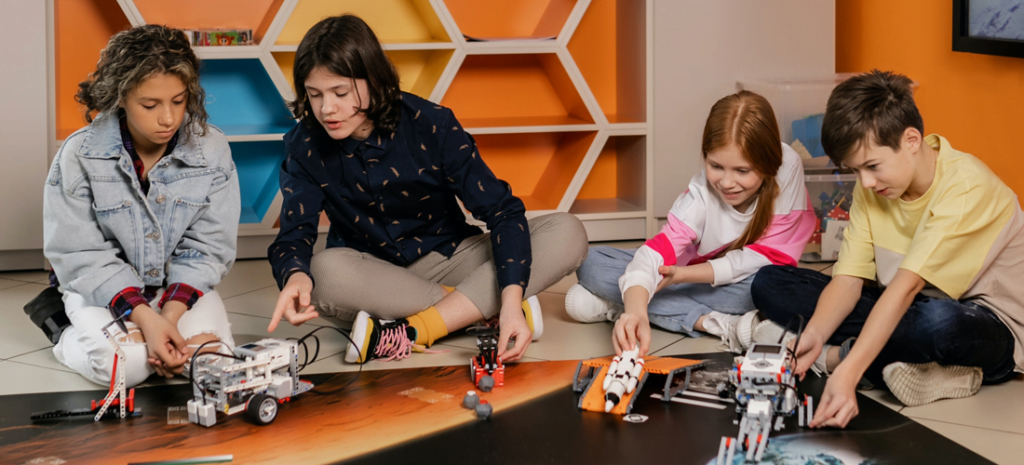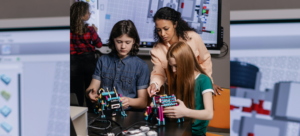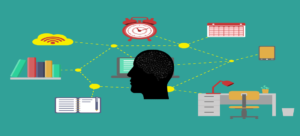Let’s go on a journey to explore “The Role of Technology in Learning”. Its profound impact on the way we acquire knowledge, develop skills, and engage with educational content. Technology has changed our lives in many ways, and it’s also changed how we learn. Now, technology gives learners, educators and institutions amazing tools to make learning fun and easier.
Technology can be a powerful tool in helping with your learning and education. From virtual classrooms to global connectivity, you can benefit from these digital tools and platforms that are transforming modern classrooms. Technology makes it easier for you to connect, communicate, and collaborate with learners around the world.
- Benefits of Using Technology in Learning
- 1. Enhanced Access to Information
- 2. Personalized Learning
- 3. Interactive and Engaging Learning
- 4. Collaborative Learning Opportunities
- 5. Immediate Feedback and Assessment
- 6. Flipped Classrooms and Blended Learning
- 7. Access to Specialized Resources
- 8. Promoting Lifelong Learning
- 9. Real-world Application and Simulation
- 10. Inclusive Education
- 11. Global Connectivity and Cultural Exchange
- 12. Efficient Administration and Resource Management
- Challenges with Using Technology in Learning
- The Future of Technology in Learning
- Balancing Technology with the Human Touch in Education
- Conclusion
Benefits of Using Technology in Learning
The use of technology in learning offers numerous benefits. It has transformed the educational landscape and enhanced the learning experience for students and educators alike.
1. Enhanced Access to Information
Technology can help you learn by giving you access to lots of information. You can use the internet, digital libraries, e-books, and educational websites to find out more about different subjects. This way, you can look at different points of view and research topics in more detail. With all this extra knowledge from technology, you can gain a better understanding of what you’re studying!
2. Personalized Learning
Using technology for learning can help you personally. It can give you educational experiences that fit what you need, like, and do best in learning. Technology like adaptive learning platforms or algorithms can measure how well you are doing. It can make sure the content and speed is right for your abilities. This way of personalized learning lets you take charge of your education and you get more involved in it. This makes your overall results better because it matches what works for you specifically.
3. Interactive and Engaging Learning
Technology can make learning more fun! It offers lots of cool things like videos, games, and quizzes. With this technology you get to be really involved in the learning process. You get to practice your knowledge in a real way. You become more interested and remember things better! Technology is awesome because it turns traditional education into a fun and exciting experience. This, in turn, helps you understand the subject better.
4. Collaborative Learning Opportunities
You can use technology to learn in lots of different ways. Technology lets you have virtual classrooms, video chats, and online discussion groups. That way you can talk to other students and teachers no matter where they are. Collaborative learning helps you get better at talking with others, working together on projects, and understanding different points of view. It is a great way to build skills that will help you succeed in the world today!
5. Immediate Feedback and Assessment
Using technology for learning can help you get quick feedback about how well you are doing. Online quizzes, interactive activities and digital exams can give you insights about what your strengths are and what needs improvement. This kind of feedback can help you understand things better and make changes to the way that you learn. For teachers, it makes it easier to see how well everyone is doing and make sure they teach in a way that fits everyone’s needs. Quick feedback helps keep the learning cycle going strong, keeps students motivated, interested in learning and helps them do even better!
6. Flipped Classrooms and Blended Learning
Using technology in learning can help you get more out of your school day. Flipped classrooms and blended learning are two ways to do this. In a flipped classroom, you watch lectures and read materials online outside of class, while in-class time is used for talking about the topics, doing activities to practice what you’ve learned, and applying your knowledge. Blended learning mixes traditional face-to-face instruction with online learning elements, so you can learn from different sources at the same time.
Technology also helps teachers share digital materials with students quickly and easily. This way, you have time to understand the material before coming to class where you can take part in discussions or group activities that help develop skills like problem solving and critical thinking. So overall it’s an exciting way for both teachers and students to make the most of their educational experience!
7. Access to Specialized Resources
Technology can help you to learn in a lot of different ways. You can access special resources like online courses, webinars, tutorials from experts and research databases that teach you about topics and skills that are not always taught in school. Technology also gives you access to the latest research, industry-specific content and case studies so you can become an expert on something specialized. Plus, with technology, you can learn when it’s convenient for you – it makes learning flexible and easier for you to pursue your interests! All this means that technology helps broaden your knowledge so that you have the skills needed to do well in whatever area or field of study you choose.
8. Promoting Lifelong Learning
Technology can help you learn throughout your whole life. It gives you access to lots of knowledge, skills, and new things. You can take online courses that fit your interests and goals. Learning with technology helps you grow and learn for a long time instead of just once. As technology grows, it will continue to make learning easier for everyone and give us the power to stay up-to-date with what’s happening in the world around us!
9. Real-world Application and Simulation
Using technology in learning gives you great experiences. You get to do hands-on activities in a safe and controlled environment. With technology, you can do virtual simulations, augmented reality (AR), and interactive exercises that are just like real life.
When doing these simulations, it helps you practice what you learn and think more critically about problems. This also helps bridge the gap between theory and practice so that you can use your knowledge in real-world situations. Plus, if something goes wrong during your simulation, it’s okay! You don’t have to worry about any real-life consequences from making mistakes because this is a chance for trial-and-error learning – which will help deepen your understanding of concepts.
10. Inclusive Education
Using technology in learning can help everyone, no matter what their abilities are. Technology has tools like text-to-speech and screen readers that let people with disabilities take part in learning. It also helps each person learn in their own way – at their own pace and level. Adaptive platforms change the difficulty of the content as you go, so you get just the right challenge for your needs. That means everyone is included and respected in the classroom – which makes it a better place to learn for everyone!
11. Global Connectivity and Cultural Exchange
Using technology for learning is cool because it lets you connect with people from all over the world. You can join virtual classrooms, use video chat, or work together on projects online. This way, you get to learn about different cultures and make friends from far away places. It’s like taking a virtual trip around the world! Technology also helps us understand each other better and be more respectful towards different perspectives and beliefs. All of this makes us better global citizens!
12. Efficient Administration and Resource Management
Technology can help you learn in many different ways. It makes it easier for teachers and schools to do things such as enrolling students, keeping records, giving grades and planning lessons. Technology also helps make sure that the school’s resources are used well. Learning management systems (LMS) or online platforms let teachers organize their content so it’s easy to access anytime, anywhere. Technology also gives administrators tools like data analytics and reporting that help track student progress and identify ways they can improve the learning experience for everyone. By using technology for administration and resource management, educators can be more productive while still saving money!
Challenges with Using Technology in Learning
While technology offers many benefits, there are also challenges associated with using technology for learning. In order to successfully integrate technology into the classroom, educators must be aware of both the potential benefits and challenges associated with using technology for learning. By leveraging the power of technology for educational purposes, we can empower students to become more active and engaged learners and prepare them with the skills needed to thrive in today’s digital age.
1. Digital Divide
Not all students have equal access to technology and the internet, leading to a digital divide. Some learners may face barriers due to socioeconomic factors or limited connectivity in rural areas.
Address the digital divide by providing access to technology and the internet for all students. Establish computer labs in schools, offer loaner devices, and collaborate with community organizations to bridge the gap.
2. Distractions and Misuse
Technology can be a double-edged sword, as it may lead to distractions and misuse in the learning environment. Students may be tempted to engage in non-educational activities, affecting their focus and productivity.
Teach students responsible use of technology, emphasizing the importance of staying focused during learning sessions and practicing good digital etiquette.
3. Data Privacy and Security
Storing sensitive student data and information online raises concerns about data privacy and security. Educational institutions must prioritize cybersecurity to protect students’ personal information from breaches and unauthorized access.
Invest in robust cybersecurity measures, regularly update software, and provide training to staff on data protection protocols to ensure student data remains safe and confidential.
4. Lack of Tech Literacy
Some students and educators may lack adequate technology skills or experience, leading to difficulties in navigating digital tools and hindering the full potential of technology in the learning process.
Provide ongoing professional development for educators to enhance their technology skills and integrate digital tools effectively into their teaching methods.
5. Overreliance on Technology
Overemphasis on technology may overshadow the importance of traditional teaching methods and human interaction, potentially diminishing the quality of education.
Encourage a balanced approach to learning, combining the benefits of technology with traditional teaching strategies, fostering a well-rounded educational experience.
6. Quality of Online Content
The abundance of online resources makes it challenging to discern the credibility and accuracy of information, leading to potential misinformation and unreliable sources.
Guide students on how to evaluate the credibility of online sources, encourage the use of reputable educational websites, and provide curated resources aligned with the curriculum.
7. Infrastructure and Technical Issues
Technical glitches, network disruptions, and hardware malfunctions can disrupt the learning process, causing frustration and hindering productivity.
Establish an IT support system to promptly address technical issues, ensuring that both students and educators have a smooth learning experience.
The Future of Technology in Learning
Technology is making learning more interesting and accessible for everyone. As technology advances, it will open up new ways for both teachers and students to learn in exciting and different ways. So get ready to experience the power of technology in your education!
1. Artificial Intelligence (AI)
AI is revolutionizing the educational landscape, providing personalized learning experiences tailored to each individual student. Utilizing advanced algorithms that analyze data and behavior, AI can curate content and adjust learning paths accordingly to best suit the needs of the student. This technology also offers on-demand support in the form of AI chatbots, providing crucial feedback and guidance to help students along their learning journey. With the power of technology, education is increasingly becoming more empowering in the digital age.
2. Virtual Reality (VR) and Augmented Reality (AR)
Virtual Reality (VR) and Augmented Reality (AR) technologies are revolutionizing the way education is experienced. By immersing students in a virtual environment, they can explore new concepts and participate in simulated experiments that make learning more tangible and engaging. Students can visualize complex ideas with 3D models and use interactive visuals to retain information more easily. As technology advances, these immersive learning experiences will become even more effective and widespread. Ultimately, the use of VR and AR in education is empowering our students with the tools they need to succeed in the digital age.
3. Blockchain
Blockchain technology is revolutionizing the education industry, providing students with secure and reliable ways to verify academic credentials. It enables comprehensive digital records of qualifications, certificates, and other forms of educational documentation that can be accessed with complete trust. This reduces the potential for fraudulent activities and creates a trustworthy atmosphere within the learning environment.
4. Internet of Things (IoT)
By harnessing the power of the Internet of Things (IoT), classrooms and campuses are given the opportunity to become smarter. IoT-enabled devices allow schools to collect data on student engagement and environmental conditions, which can provide insight into decision-making processes that help students learn more effectively.
5. Gamification
Through gamification, educators are able to incorporate game elements and mechanics into activities, transforming lessons into fun yet challenging tasks. This encourages students to stay motivated and engaged in their learning journey while also fostering a sense of healthy competition amongst peers. Most importantly, it rewards students for their achievements and encourages them to reach higher levels of success.
6. Educational Robotics
Robotics is revolutionizing the way students learn and engage with STEM-related topics. Educational robots offer learners a hands-on approach to coding, robotics engineering, and computational problem solving. Not only does this give them the skills needed for in-demand jobs in technology and engineering, but it also sharpens their critical thinking skills. With the right robotics learning resources, students will be equipped to excel in the digital age.
7. Biometrics and Facial Recognition
Technology is empowering education in the digital age like never before, and biometric technologies are leading the charge. Fingerprint and facial recognition, for example, make it easier for schools to authenticate students quickly and easily, improve security on campus, and streamline administrative processes related to attendance tracking. With this technology readily available, educators everywhere have access to smarter methods for accurately tracking attendance and protecting students.
8. Cloud Computing
Cloud computing provides an expansive platform for learning, one that offers access to educational resources, data storage, and a collaborative workspace. This platform allows both students and educators to collaborate with ease, providing access to materials from any device or location. It eliminates the physical boundaries of traditional learning, empowering education in the digital age.
9. 3D Printing
3D printing is revolutionizing the way students learn by affording them the ability to create tangible representations of their ideas. This type of tactile learning empowers students in fields like engineering, architecture, and design by providing a physical representation of their concepts. Furthermore, these 3D-printed models enable students to gain a deeper understanding of the theories they are learning. By allowing for a more hands-on approach to education, 3D printing is positively impacting how students engage with the material and acquire knowledge in the digital age.
10. Natural Language Processing (NLP)
NLP technology enables language understanding and generation, enhancing language learning and supporting students with language difficulties. By leveraging NLP technology, students can gain a deeper understanding of language and its nuances, enabling them to become better communicators. NLP tools make it possible for students to access personalized instruction tailored to their own language levels and abilities.
Balancing Technology with the Human Touch in Education
Balancing technology with the human touch in learning requires a thoughtful and intentional approach that combines the benefits of technology-driven education with the essential elements of personal interactions and emotional connections between educators and students.
One strategy to achieve this balance is by creating a personalized learning experience. This personalized approach ensures that students receive the necessary guidance to succeed academically and emotionally. Another effective approach is the implementation of blended learning models. Blended learning integrates digital resources and online learning platforms with face-to-face classroom interactions. This combination allows students to benefit from the flexibility and accessibility of technology while still maintaining the engagement and social interactions that come with traditional classroom settings.
Humanizing digital content is another way to strike a balance between technology and the human touch. Educators can create digital learning materials that reflect the human touch by incorporating storytelling, real-life examples, and personal anecdotes. Collaborative learning experiences, facilitated by technology, also play a crucial role in balancing the human touch in education. Online discussions, group projects, and virtual teamwork provide opportunities for students to collaborate and learn from one another.
Incorporating social-emotional learning (SEL) programs into the curriculum is another vital aspect of balancing technology with the human touch. These programs focus on developing students’ emotional intelligence, self-awareness, empathy, and relationship-building skills. Additionally, promoting digital citizenship and etiquette is essential for responsible and ethical use of technology. By teaching students to be respectful and positive online, educators contribute to the creation of a safe and inclusive digital learning environment.
Balancing technology with the human touch in education requires a multifaceted approach. By leveraging technology to personalize learning, promoting blended learning, and facilitating collaborative experiences, educators can create an inclusive and enriching educational environment. Emphasizing face-to-face interactions, supporting social-emotional learning, and nurturing positive teacher-student relationships further contribute to the human touch in the digital learning landscape.
Conclusion
In this digital age, it is clear that technology has the potential to revolutionize education and make learning more accessible and engaging for students. By leveraging the power of technology, educators can create interactive experiences that help motivate learners to reach their full potential.
Technology also enables teachers to easily assess student progress in real-time and provide personalized instruction as needed. As we continue to explore new ways of teaching with tech tools, there are endless possibilities for how technology can empower education globally.
We must remain dedicated to finding innovative solutions that bridge the gap between traditional methods of teaching and modern technological advances in order for our society’s youth to have access to a quality education no matter where they live or what economic background they come from.





















